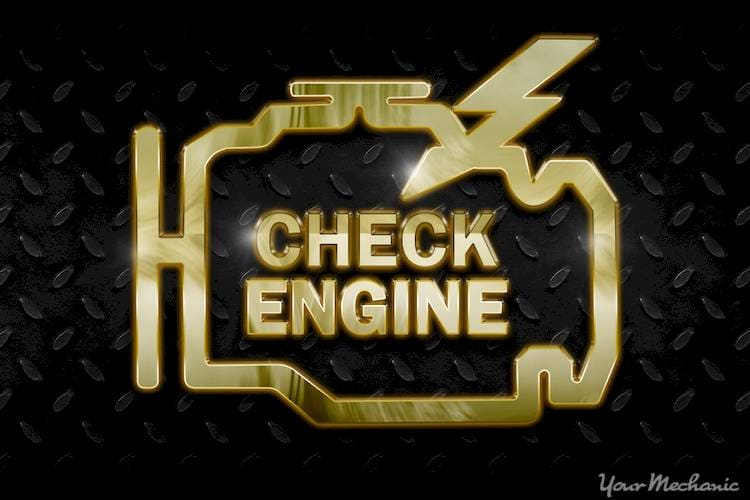Diagnostic Trouble Code (DTC): P2084
P2084 code definition
Exhaust Gas Temperature (EGT) Sensor Circuit Range/Performance Bank 1 Sensor 2
Related Trouble Codes:
- P2080: EGT Sensor Circuit Range/Perf Bank 1 Sensor 1
- P2081: EGT Sensor Circuit Intermittent Bank 1 Sensor 1
- P2082: EGT Sensor Circuit Range/Perf Bank 2 Sensor 2
- P2083: EGT Sensor Circuit Intermittent Bank 2 Sensor 1
- P2085: EGT Sensor Circuit Intermittent Bank 1 Sensor 2
- P2086: EGT Sensor Circuit Range/Perf Bank 2 Sensor 2
- P2087: EGT Sensor Circuit Intermittent Bank 2 Sensor 2
What the P2084 code means
The P2084 diagnostic trouble code is an indication that there is a range/performance issue of the exhaust gas temperature (EGT) sensor 2 circuit on Bank 1.
The EGT sensor monitors the temperature of exhaust gas and sends this information to the powertrain control module (PCM) through a voltage signal. When the PCM receives this information, it will adjust accordingly in order to reduce harmful emissions that are expelled into the environment.
The EGT sensor is a resistor that reacts to temperature. As EGT levels increase or decrease, the resistance levels will change and the voltage signal will communicate these variations to the PCM. To ensure the EGT does not does not increase to dangerous levels that could damage the catalytic converter, the PCM will make adjustments to the air/fuel mixture or ignition timing. These adjustments are made according to the information in the voltage signal that is received from the EGT sensor. If these voltage signals go outside the predetermined range set by the vehicle manufacturer, this is an indication that the EGT sensor is not working properly. The PCM will store the P2084 diagnostic trouble code, and the Check Engine Light will come on.
What causes the P2084 code?
Faulty EGT sensor
An internal short in the EGT sensor
EGT sensor wiring that is damaged, loose, or burnt
Exhaust has temperature sensor connectors that are damaged, disconnected, or corroded
A large exhaust leak located before the placement of the EGT sensor
A back pressure decrease, resulting from the installment of a high performance aftermarket exhaust system.
What are the symptoms of the P2084 code?
-
Check Engine Light is illuminated
- No obvious symptoms
- The P2084 diagnostic trouble code is stored in the PCM
How does a mechanic diagnose the P2084 code?
Uses an OBD-II scanner to collect all of the diagnostic trouble codes that have been stored by the PCM
Inspects all wiring for damage, disconnections, or melted wiring
Inspects all connectors for damage, disconnections, or corrosion
Inspects EGT sensor wiring and connectors at or near the exhaust for damage, disconnections, or melted wiring
Repairs or replaces all wiring and/or connectors that are damaged, loose, corroded, or melted
Clears all trouble codes and completes a test drive to see if the P2084 diagnostic trouble code comes back
If the P2084 diagnostic trouble code comes back, tests the EGT sensor resistance levels using a volt/ohmmeter (if the resistance level falls below 50 ohms, it will need to be replaced)
Clears all trouble codes and completes a test drive to see if the P2084 diagnostic trouble code comes back
If the P2084 diagnostic trouble code comes back, checks the EGT sensor voltage signal at the connectors (if the voltage signal is low or there is no voltage signal present, the EGT sensor connector at the PCM will need to be disconnected and tested for continuity)
Repairs or replaces any wiring and connectors that fail to meet voltage signal requirements
In the event that there is no continuity in the EGT sensor connector at the PCM, this indicates that the PCM is faulty and will need to be replaced and reprogrammed.
Common mistakes when diagnosing the P2084 code
The most common mistake that is made when diagnosing the P2084 trouble code is mistaking the oxygen sensor for the EGT sensor.
It is also a common misconception that the EGT sensor is built inside of the heated oxygen sensor and for this reason, oxygen sensors are sometimes replaced in error.
How serious is the P2084 code?
A diagnostic trouble code is usually considered serious when it causes driveability issues or a change in performance. The P2084 trouble code is not known to cause driveability issues or changes in the performance of the vehicle, therefore it is not considered serious. Like all diagnostic trouble codes, an extended period of time should not pass before having them diagnosed and repaired. Allowing an extended period of time to pass before addressing any trouble codes could cause damage to other components.
What repairs can fix the P2084 code?
Replacing the EGT sensor
Repairing or replacing damaged, loose or burnt EGT sensor wiring
Repairing or replacing damaged, disconnected or corroded EGT sensor connectors
Repairing or replacing any breaks in the exhaust in the location that is in front of the EGT sensor
Adding an inline resistor to the aftermarket exhaust in order to increase the back pressure
It is possible for the P2084 diagnostic trouble code to be caused by a high performance aftermarket exhaust. If this type of exhaust has been installed in the vehicle, keep this in mind.
When replacing the EGT sensor make sure you do not mistake it for the oxygen sensor. These two sensors look alike and are commonly mistaken for one another.
Need help with a P2084 code?
YourMechanic offers certified mechanics who will come to your home or office to diagnose and repair your vehicle.
Get a quote and book an appointment online or speak to a service advisor at 1-800-701-6230.
Check Engine Light
trouble codes
P2084
No more waiting rooms! Our mechanics will come to you to diagnose and fix the P2084 code.





